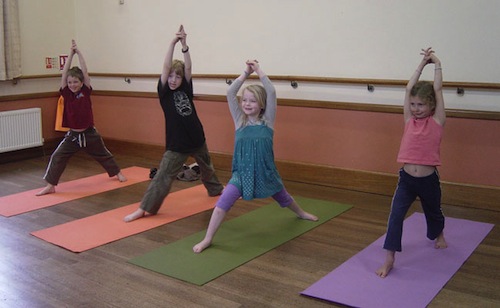Ben al-Fowlkes sent me this article from the New York Times about a California Christian group that objects to kids’ yoga classes at Paul Ecke Central Elementary School. Yoga comes from Hindustan, as we all know, and merely holding your arms above your head brings you closer to worshipping their mad monkey god. The story is chock full of delightful quotes, including but not limited to parent Mary Eady’s complaint that the classes were teaching children “how to think and how to make decisions” and to “look within for comfort.” Monsters! This piece is instructive for another reason, though: it contains two examples of an A-plus tactic of dirty argumentation, the false analogy.
The first comes from Dean Broyles, president and chief counsel of the National Center for Law and Policy. According to its website, his organization “champions religious freedom and traditional marriage,” so already we know we are in the crystalline realm of intellectual honesty. Says Broyles:
There is a transparent promotion of Hindu religious beliefs and practices in the public schools through this Ashtanga yoga program. The analog would be if we substituted for this program a charismatic Christian praise and worship physical education program.
Charismatic Christians worship by dancing and speaking in tongues and thrashing around. It’s physically strenuous, but only if you are elderly or substantially overweight (i.e., a charismatic Christian.) Also, the religious content of charismatic worship is supplied by an explicitly religious companion ceremony. If you take away the liturgy and the church and stuff, you’re left with jumping around and making nonsense sounds—in other words, normal child behavior.
So it’s kind of an imperfect comparison. In the same way that I can pick up a snake without becoming a Pentecostal, kids can do standing separate-leg head to knee pose without becoming Hindus. The aforementioned Eady, however, is not convinced. She rejects the school’s opt-out policy, saying that the program should be stopped outright in order to avoid indoctrinating unsuspecting students. Quote:
Yoga poses are representative of Hindu deities and Hindu stories about the actions and interactions of those deities with humans. There’s content even in the movement, just as with baptism there’s content in the movement.
Yes, just as baptism—both have meaning and both involve physically moving. Granted, baptism explicitly symbolizes induction into a religious faith, whereas I am living proof that it’s possible to do a bunch of yoga and have no idea where any of the poses come from. But it’s foreign, dammit, and obviously religious. Just look at all its analogs in Christian worship.
Now go forth and liken what you don’t support to obvious injustices that no one would support. It’s a way to win an argument, after all, and when you’re right, the important thing is that other people agree with you. Now I must go up into the South Hills, because Ben and Sarah al-Fowlkes are at the hospital having a baby. I will look after their dog, a responsibility that I hope to be ready for myself someday.





Great article. Yoga blessings to Ben and Sarah!
“Granted, baptism explicitly symbolizes induction into a religious faith, whereas I am living proof that it’s possible to do a bunch of yoga and have no idea where any of the poses come from.”
It’s also very possible to be baptized and have no idea what it means. Being a baby and all.
I have no particular sympathy for the anti-yoga types but your argument strikes me as pretty strained. It *is* weird for a school to ask its students to perform religious rituals as part of the school day. Yoga has a unique status as (1) Hindu quasi-ritual, (2) vague new-agey spiritualism, and (3) secular American exercise craze all at once, but it’s not exactly crazey to focus on the first two rather than exclusively on the third.
“crazey” ugh sorry crazy.
Charismatic Christians worship by dancing and speaking in tongues and thrashing around. It’s physically strenuous, but only if you are elderly or substantially overweight (i.e., a charismatic Christian.)
A+
The caption under the photo of the 4children in a yoga pose is not the caption provided by the original article producer. Looks like some cyber-bully jumped in There to be nasty.